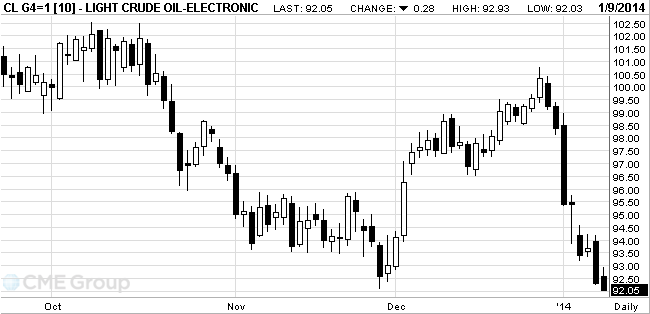- Oil fell
Market news
Oil fell
West Texas Intermediate crude tumbled to the lowest level in more than six weeks, erasing an earlier advance of 0.7 percent.
Pressure on
oil futures continue to provide data to the government report , pointed out the
restrained demand for petroleum products .
According
to data released on Wednesday the U.S. Department of Energy , the oil reserves
in the country last week fell by 2.7 million barrels, while they expected a
decline of 600,000 barrels. Reducing oil reserves observed the sixth
consecutive week . However , news about the growth of stocks of petroleum
products have overshadowed reports of the high demand for oil .
According
to the Ministry of Energy , gasoline inventories in the week December 27 -
January 3, increased by 6.2 million barrels, while expected to rise by 2
million barrels. Distillate stocks , which include diesel and heating oil, rose
by 5.8 million barrels, while the projected growth of 1.5 million barrels .
Futures on
crude oil prices continued to decline after the December meeting of the
protocols of the Federal Reserve , according to which most of the leaders of
the central bank supported the folding of bond-buying program . The program
supported oil prices, weakening the dollar, which , in turn, makes oil more
attractive to foreign investors.
WTI for
February delivery slid 32 cents, or 0.3 percent, to $92.01 a barrel at 10:12
a.m. on the New York Mercantile Exchange. Earlier, it touched $91.94, the
lowest intraday price since Nov. 27. The volume of all futures traded was 8.9
percent below the 100-day average. Prices have fallen 5.9 percent since the
start of the year.
Brent for
February settlement increased 1 cent to $107.16 a barrel on the London-based
ICE Futures Europe exchange. The European benchmark crude was at a premium of
$15.15 to WTI, compared with $14.82 at yesterday’s close.
